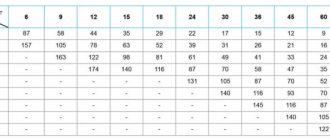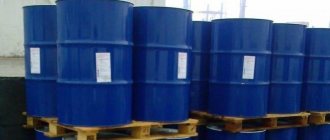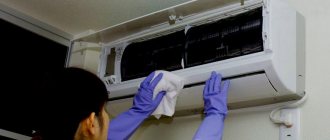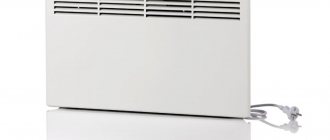Temperature standards in residential premises are established in order to ensure comfortable conditions for human life during the cold season.
Heating in apartment buildings is provided by public utilities. Unfortunately, they do not always adhere to current legislation. If the standard temperature in the apartment is not observed, then its owner has the right to file a complaint with the relevant government service.
Standard temperature in residential premises
Today, the procedure and specifics of central heating are regulated by SanPiN documents. All necessary data is collected in Resolution No. 354 of 05/06/2011. If necessary, a person can go to court at any time if these norms and rules are not observed.
The standard temperature in an apartment according to SNIP is set as follows:
- Not less than 18˚С.
- In the corner room at least 20˚C.
- Temperature reduction by 3˚C at night is allowed.
The heating devices used in the apartment must also comply with sanitary standards. For example, the temperature of a water heater cannot be more than 90˚C.
What to do if the temperature is below the required norm?
Where to go if the temperature in the apartment is below normal?
If all the residents of an apartment are constantly freezing in it, then this is a reason to think about compliance with the established temperature standards.
A short decrease in the established standards may go unnoticed and will not cause harm to a person.
However, prolonged hypothermia can lead to health problems. These can be common colds, exacerbations of chronic diseases, poor health, weakness and apathy.
Therefore, you should not ignore this problem. Of course, you can just turn on the heaters.
But then you will have to pay both for additional units of wasted electricity and for poor-quality apartment heating services.
You should report the presence of such a problem to your management company or service organization.
Factors affecting the temperature in the apartment
The air temperature in a living room in winter is important. It is formed not only through the influence of heating devices. The following factors should also be taken into account:
- Climatic conditions of a particular region. The minimum temperature plays an important role.
- Season. The premises are heated not only in winter. The devices also work in spring and autumn. At the same time, temperature indicators during this period are different.
- Human factor or individual preferences.
- Materials that were used to build the house. Today, quite often an additional layer of insulation or waterproofing is used.
The permissible wall temperature in an apartment, according to current standards, should not be lower than 20° degrees. Otherwise, it will not be possible to create comfortable living conditions in the room. It is also affected by the weather and dew point.
Requirements GOST 30494-2011:
According to clause 4.4 and table 1 of GOST 30494-2011, the optimal and permissible standard air temperature should lie within the limits:
During the cold season (including the heating season):
- Living room: optimal 20-22°C, acceptable 18-24°C;
- Kitchen: optimal 19-21°C, acceptable 18-26°C;
- Toilet: optimal 19-21°C, acceptable 18-26°C;
- Bathroom, combined toilet: optimal 24-26°C, acceptable 18-26°C
- Living room in areas with the coldest five-day temperature (probability 0.92) minus 31°C and below: optimal 21-23°C, acceptable 20-24°C.
During the warm season:
- Living room: optimal 22-25°C, acceptable 20-28°C.
According to clause 4.6, when ensuring microclimate indicators at various points in the service area, an air temperature difference of no more than 2°C is allowed for optimal indicators and 3°C for acceptable ones.
In accordance with clause 4.7, in residential buildings in accordance with regulatory and technical documents (SP 60.13330.2016 Heating, ventilation and air conditioning. Updated edition of SNiP 41-01-2003) during the cold period of the year during non-working hours, it is allowed to reduce microclimate indicators by taking the air temperature below the normalized value, but not below:
- 15°C - in residential areas.
The normalized temperature must be ensured before use.
Temperature standards in various rooms
The optimal temperature in an apartment is a subjective concept that depends on the individual preferences and habits of the owner. The sensations should not cause discomfort. Otherwise the person will feel bad.

Temperature indicators are considered acceptable if they comply with those established by current legislation:
• Any residential type premises - at least 18° C. • The room between two neighboring apartments - at least 16° C. • Kitchen - at least 18° C. • Toilet, bathroom - at least 18° C. • Entrance lobby or staircase cage - at least 14° C. • Storage room - at least 12° C.
In our separate article, you can also find out the recommended indoor humidity standards. These standards also significantly affect a person’s comfortable perception of the indoor microclimate.

The influence of humidity on a person’s comfortable state at the same temperature
What should be the air temperature in the room?
In different countries and cities, the standard of comfortable temperature conditions is different, and this is due, first of all, to the climatic characteristics of the area. In order to determine what air temperature is optimal for a particular room, you also need to take into account how humid the air is.
In addition, it is worth noting that the microclimate also changes depending on the time of year. For example, in winter the apartment is heated using a radiator and the temperature in it is slightly lower than in summer, when heating replaces the warm sun.
In the cold season, the air in the room should be heated to +22 degrees Celsius, and in the warm season – to +25. At first glance, this difference may seem insignificant, but in fact it is not.
Room temperature
Perhaps it’s no secret that the air in the apartment is heated unevenly. The temperature regime largely depends on what function the room performs:
- In order not to suffer from headaches and not suffer from insomnia, the temperature in the bedroom should range from 17°C to 18°C.
- A room such as a kitchen itself contains many items that help increase the room temperature: an oven, an electric kettle, a stove, etc. Therefore, the air in it should only be heated to 19°C.
- The proper temperature regime for the bathroom is slightly higher than for other rooms. It should be 24−26 °C, otherwise the room will seem too damp.
- One of the most important rooms in the apartment is the children's room. The temperature in it depends on the age of the child living there. So, for example, a newborn baby feels most comfortable if the temperature is somewhere around 23-24°C, while an older child needs a lower temperature - 21-22°C.
- In other residential areas, the optimal air temperature can vary from 18 to 22°C.
Additionally, it is worth noting that the proper temperature regime must be maintained in all rooms and at the same time try to ensure that when moving from one room to another, you do not feel too strong changes in air temperature. A normal and comfortable temperature regime for a person means that when you move, for example, from the living room to the kitchen, you will not feel a significant difference, since the temperature will change by a maximum of 2 degrees in one direction or another.
Ideal temperature in a child's room
Pediatric sources advise paying close attention to your baby’s temperature. Overheating or hypothermia can negatively affect its general condition. The temperature in the child's bedroom should be 18°-20° C. Thanks to this, all biochemical processes in his body will proceed normally.
Dr. E.O. Komarovsky warns that the increase is dangerous and can lead to disruptions.
However, it is necessary to increase the intensity of the heating system for a newborn who was born ahead of schedule. For its development, it is necessary to create certain conditions, which the pediatrician will tell parents in more detail.
Optimal temperature during the heating season
Residents of our country observe an increase in utility bills every year. At such a moment of crisis, they are paying a significant part of the budget and want to know that they will be in comfortable conditions in the winter. Unfortunately, public utilities do not always do their work conscientiously. That is why it is important to know what the temperature in the apartment should be during the heating season in the apartment.

The relationship between the owner of this service is regulated by GOST R 51617-2000. It specifies each period of the year and general technical conditions.
In winter, it is necessary to adhere to the range from 18° to 25° C.
If you deviate from the norm, it is difficult to imagine comfortable living in an apartment.
Temperature standards
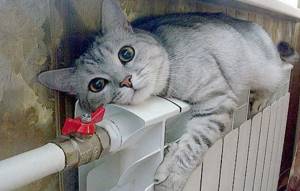
Of course, a lot depends on the preferences of the residents - some like it colder and are content with a low temperature of 18° C, others prefer cozy warmth and 24-25° C instead of thick sweaters and socks. But you need to know what temperature should be in our apartment according to legislation , since not only the health and well-being of the family, but also the budget depends on this.
The standard temperature in the apartment is contained in GOST R 51617-2000. Housing and communal services. General technical conditions". Here are the values needed to calculate the maximum power of heating devices. Staircases in residential buildings should have a temperature of 14-20 ° C. This is a space that residents use for a short time, no more than an hour, and are dressed in outerwear.
In inter-apartment corridors, as well as in lobbies, the temperature is 16-22 ° C. In hallways, living rooms and kitchens with gas or electric stoves, the temperature is 18-25 ° C. These rooms are intended for permanent residence (that is, more than 4 hours). The highest temperature is 24° C – valid for calculations in the bathroom. The norm is also regulated by Sanitary Rules and SanPiN.
Medical standards for temperature conditions in residential premises
A little about what the optimal temperature should be in a house according to medical recommendations. The norm in residential premises is 22° C. This temperature provides high thermal comfort with an air humidity of 30%. If the room temperature is higher, it can cause irritation of the respiratory tract, mucus, and increased susceptibility to bacteria and viruses in the nose and throat. The only exception is the bathroom, where water vapor rises and even higher temperatures do not pose a health risk.
When the child is at home, the temperature in the apartment should be raised by at least 1 degree, and in the bathroom or other room where he bathes, up to 28 degrees. In adult bedrooms, the temperature can be slightly cooler than in the living room - around 20° C. This indicator guarantees deeper sleep and, therefore, better rest.
The importance of maintaining a comfortable temperature
To create comfortable conditions, it is recommended to keep the temperature at 22° C. An increase or decrease causes irreparable harm to the body.
The heat in the room creates a favorable environment for the growth and development of bacteria harmful to the human body. At the same time, normal temperature does not impair heart function. The heat thickens the blood and forces the internal organs to work intensively. Constant exposure leads to dehydration, which provokes nervous tension.
Hypothermia or hypothermia quite often acts as a trigger for the development of a cold. It is important that your body temperature does not fall below 36 degrees. Hypothermia is especially dangerous for children. Their body has little heat transfer, so it cannot recover quickly.
Rules for measuring room temperature
The rules for measuring air temperature are very important, because only if they are followed will it be possible to obtain the correct result. To perform the manipulation, you will need a regular mercury thermometer for internal use. It should be located away from heating appliances. The optimal solution is to place it suspended permanently.
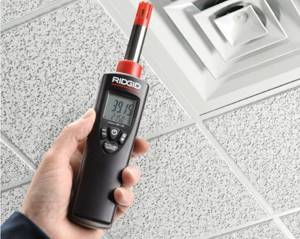
Temperature measurements must be carried out by a registered device according to current regulations. Today there are many devices on the market that have a high level of accuracy. It must be located at least 1.5 meters from the floor. In this case, there must also be at least 1 meter to the outer wall. You can get an accurate result only if the thermometer remains in the selected position for at least 10 minutes.
Indoor climate control
The indoor microclimate is regulated not only by the heating system. Attention should also be paid to the following factors.
- Ventilation provides the necessary air exchange. Oxygen enters the room and carbon dioxide leaves. The latter factor negatively affects a person’s well-being and can cause severe headaches. An inlet valve can solve the problem. It will prevent warm air from escaping from the room. At the same time, oxygen flows in sufficient quantities.
- Central heating significantly reduces indoor air humidity. To eliminate the negative effect, it is recommended to purchase special devices. They periodically spray moisture into the environment.
- In the bathroom, hot tap water causes condensation to accumulate on the walls, which can lead to the formation of mold or mildew. Properly organized ventilation helps solve the situation. Experts advise installing a small hood.
How to ensure temperature conditions?
The tasks of maintaining the microclimate in the optimal temperature range are divided into two - cooling the atmosphere of rooms in the warm months and heating during the cold season.
The first task can be easily accomplished by air conditioning equipment placed independently in the bedrooms, living room and kitchen. Temperature sensors of single-block and double-block air conditioners (split system) will maintain the set temperature, strictly following user settings.

The gas bellows built into the thermostat reacts to the temperature of the room atmosphere, displacing the spool and controlling the flow of coolant
It is more rational to use inverter climate control technology that can maintain the temperature of the room microclimate gently, without sudden emissions of cold air flows.
Until mid-September, split systems are able to operate for heat even in a temperate climate zone, but as the temperature difference “apartment-street” increases, it will be impossible to use split systems for heating.
The task of maintaining a comfortable atmosphere in the house will shift to heating equipment - central heating radiators and underfloor heating systems.
It is not difficult to control the temperature conditions of the “warm floor” heating complex. Liquid systems are equipped with a thermostatic valve or an automatic pumping and mixing group, which are equally capable of controlling the temperature of the coolant circulating through the circuit built into the floor.
In infrared and electric floors, temperature control is carried out by digital, programmable or electromechanical thermostats. By constantly checking temperature changes against preset thresholds, they turn the system off or on.
Classic apartment heating systems, based on the circulation of hot water through pipes into radiators, also allow temperature control.
It will be necessary to equip the pipe at the coolant input to the radiator with an automatic temperature controller (thermostat) that controls the intensity of hot water supply according to a given parameter.
Note that it is easier to equip a circulation-radiator heating system with battery thermostats if it has a two-pipe design. For a single-pipe circuit, it is necessary to supplement the pipe circuit with a bypass, which creates an outlet channel for the coolant in front of the radiator.
Responsibility of utilities for violation of temperature standards
Violation of the temperature standard not only causes discomfort, but can also lead to exacerbation of a number of chronic diseases. If utility services did not check the functioning of the system in a timely manner, then residents of the house have the right to file a complaint. She initiates a review by regulatory authorities of the validity of this application.
The responsibility of utility services for violation of temperature standards comes down to the need to recalculate the cost of services already provided. Additionally, they are also required to correct all system faults. After completing the work, the microclimate of the room is re-checked. The result is recorded in a special act.

Temperature check report for residential premises
If irregularities have been identified in the central heating system, the apartment tenant has the right to claim a recalculation of the amount accrued to him in the amount of 0.15 per hour of use. Thanks to this, payments can be reduced by 90% within 28 days. However, to obtain such a decision, you will need to file a claim in court.
In practice, there are many examples of poor quality heating services for entire houses. Residents can file a class grievance that will allow them to obtain the compensation they are entitled to under the law.
To assert your rights, it is recommended to contact regulatory authorities. The application may indicate several residents at once who are not satisfied with the service provided by the utility organization. If she refuses to carry out repair work or inspection, then a lawsuit is filed.
